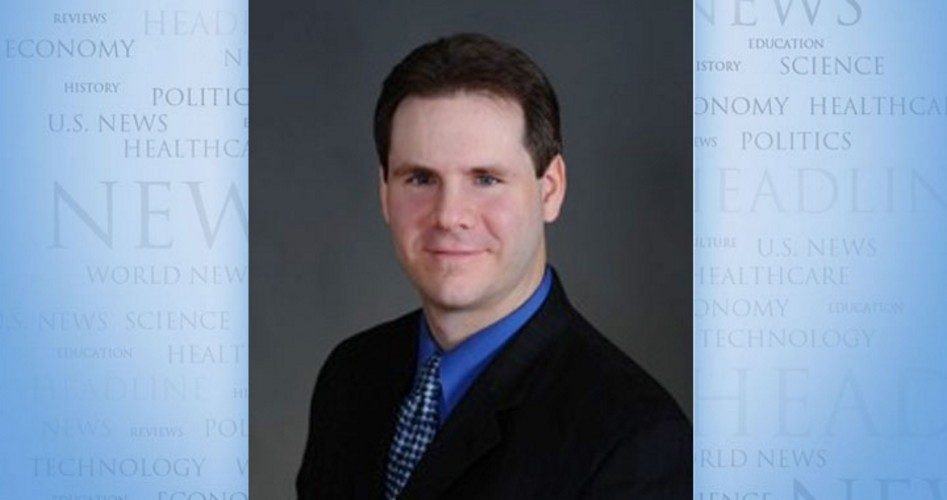
Self-image is not reality. For this reason, sadly, merely identifying as a journalist does not magically spark a transition toward erudition and wisdom. This is apparent in the coverage of how the Trump administration may define “sex” under Title IX as pertaining to the biological reality of being male or female.
This proposal, which reflects basic birds-and-bees scientific fact, has evoked hisses as “trans” people vow that they #WontBeErased. What’s missed is that the move would merely erase a bureaucratic erasure of Title IX’s meaning.
There are two entirely different but generally conflated issues here: the legal matter of what Title IX actually (and obviously) dictates, and the biological/medical issue relating to the reality, or lack thereof, of “transgenderism.” And one reason for this mistake is that people almost universally conflate two different but relevant terms.
As the New York Times reports (and distorts), “The Trump administration is considering narrowly defining gender as a biological, immutable condition determined by genitalia at birth…. [T]he Department of Health and Human Services [HHS] is spearheading an effort to establish a legal definition of sex under Title IX, the federal civil rights law that bans gender discrimination in education programs that receive government financial assistance.”
This is, perhaps unwittingly, the peddling of fake news. Title IX does not ban “gender discrimination” — it bans “sex discrimination.” “Gender” and “sex,” contrary to popular usage, are not synonymous.
Even psychologists advocating for “transgenderism” will typically define the two words thus: “In general terms, ‘sex’ refers to the biological differences between males and females, such as the genitalia and genetic differences,” explains Medical News Today. “‘Gender’ is more difficult to define, but it can refer to the role of a male or female in society, known as a gender role, or an individual’s concept of themselves, or gender identity.”
In a nutshell, “sex” is a biological phenomenon; “gender” (if you accept its application to humans) is a social or psychological one
Now, Title IX (which is unconstitutional, but that’s a different topic) uses the term “sex(es)” 16 times; it doesn’t include the word “gender” at all. Despite this, as National Review points out, in “April 2014, the Obama administration quietly expanded the definition [of ‘sex’] — without an act of Congress or even a regulatory rulemaking process. In a document called ‘Questions and Answers on Title IX and Sexual Violence’ it stated that ‘Title IX’s sex discrimination prohibition extends to claims of discrimination based on gender identity or failure to conform to stereotypical notions of masculinity or femininity.’”
This was completely contrary to the legislation’s meaning and its framers’ intent. Note that when Title IX became law in 1972, the term “gender’s” use was confined almost exclusively to words; it was a grammatical term whose widespread application to people was still many years away. Nor was the concept of “gender fluidity” known to legislators; its acceptance is a phenomenon of the last decade. Remember that this was a time when men who dressed as women were called “transvestites.”
So when Title IX’s framers outlawed discrimination on the basis of “sex,” they meant just that: the biological phenomenon of being male or female. That is the legal issue and reality. Some may not like it, and they’re free to lobby Congress to amend Title IX to include “gender” or to create new legislation altogether. But claiming that it’s covered by conflating it with “sex” reflects either profound ignorance or blatant dishonesty.
Speaking of which, the Times also wrote, “‘Sex means a person’s status as male or female based on immutable biological traits identifiable by or before birth,’ the department [HHS] proposed in the memo, which was drafted and has been circulating since last spring. ‘The sex listed on a person’s birth certificate, as originally issued, shall constitute definitive proof of a person’s sex unless rebutted by reliable genetic evidence.’”
Once again, this isn’t a “proposal”; it’s a basic word definition recognized not just by biologists, but most psychologists as well. It’s frustrating when people who write for a living can’t, or won’t, learn the basics of that on which they’re reporting.
But the Times got it wrong right off the bat with its title, “‘Transgender’ Could Be Defined Out of Existence Under Trump Administration.” This isn’t possible, of course. First, government legislation doesn’t change what you are (or aren’t). Most significantly, however — and this brings us to the biological/medical aspect — you can’t define out of existence the nonexistent.
The claim that “transgenderism” is a biological phenomenon, not a purely psychological one, has no basis in science. The sense of being an opposite-sex member stuck in the wrong body is a delusion, no different from people who insist they’re animals trapped in a human body (species dysphoria).
The proof is in the malpractice-worthy diagnostic method used to classify someone as “transgender.” There is no medical test — chemical, genetic, brain-scan oriented, or otherwise — used to render the diagnosis. Rather, it’s based on mere feelings, strong and persistent feelings of “cross-gender identification.” It is an ideological diagnosis, not a scientific one, akin to considering someone a ferret simply because he says so.
As for Title IX, Obama sought to make the law transition — without its consent — into something Congress didn’t birth. But his claims about the legislation were as much a delusion as “transgenderism” itself. The cross-dressing garments should be taken off Title IX and the record set straight.




